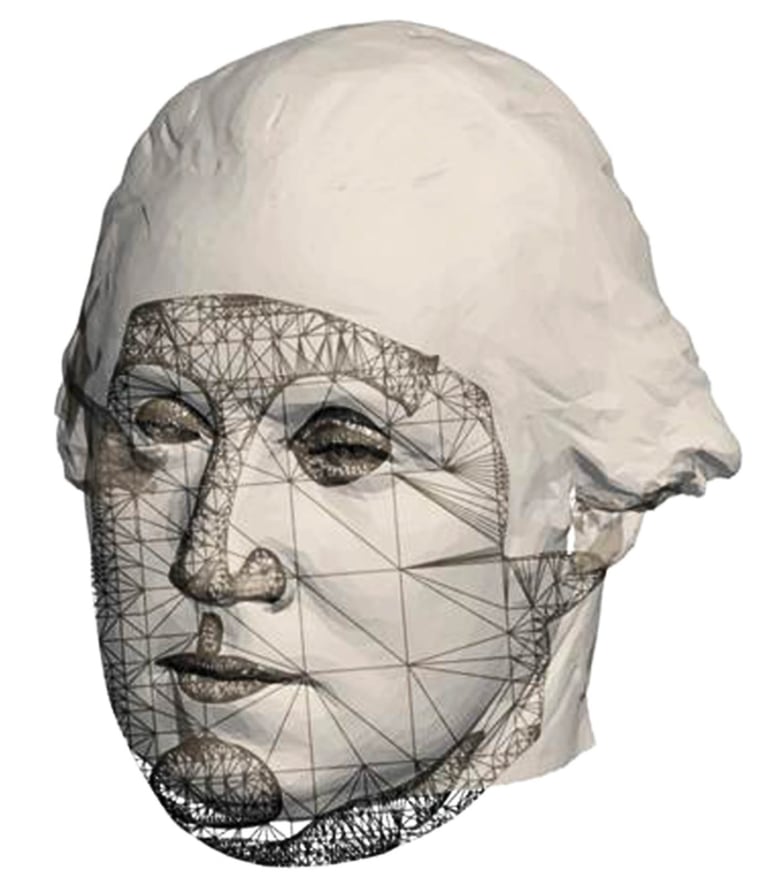The nation's Founding Father had a crooked face — his chin receding on the left and protruding on the right — the likely result of significant tooth loss, an anthropology professor has concluded.
The asymmetry is visible on both a bust and a "life mask" of George Washington made by sculptor Jean-Antoine Houdon, who applied plaster to Washington's face. The bust is generally considered the best likeness of Washington.
While many faces are not perfectly symmetrical, "the degree to which it is angled left to right is quite severe," University of Pittsburgh anthropology professor Jeffrey Schwartz said Tuesday. Schwartz is developing realistic life-size models of Washington at various stages of his life for a new exhibit at Washington's Mount Vernon estate.
When completed, there will be life-size models of Washington as a 19-year-old surveyor; as a 45-year-old commander of the Continental Army; and at 57, when he was sworn in as president.
James Rees, executive director at Mount Vernon, said the exhibit is designed to correct public misperceptions, including about Washington's face.
Many people envision him from the dour Gilbert Stuart portrait on the dollar bill. That portrait, however, is not considered a very good likeness — and fails to show Washington's vibrancy and athleticism as a younger man, Rees said. "The theme of the new education center is 'The Real George Washington,' so it seems like a natural place to start is with how he really looked," said Rees, who estimated the estate is spending at least $750,000 to develop the models.
Schwartz will use age-regression techniques to help him accurately portray Washington as a younger man. "You don't want to just take older images of Washington and give them a face lift," he said.
Washington's tooth loss, which began around age 22 and worsened throughout adulthood, required him to wear uncomfortable dentures made of animal teeth, human teeth, ivory and ox bone, among other materials. Tooth decay wreaked significant changes to the bone structure of Washington's face and jaw as he aged, Schwartz said.
Besides causing the asymmetrical chin, the bone loss in the jaw associated with the tooth loss likely gave Washington a shorter face in old age — an assumption borne out in portraits of a younger Washington, Schwartz said.
One particularly famous portrait of Washington at age 40 by Charles Willson Peale shows the longer face. When the portrait is digitally mapped onto the Houdon bust, there is a strong correlation in the upper half of the face and around the eyes, but the correlation is weaker on the lower half.
That suggests to Schwartz the Peale portrait was a good likeness of Washington at that age, but that Washington's face had changed in ways one would expect given his reliance on dentures.
The new exhibit is scheduled to open in 2006.
